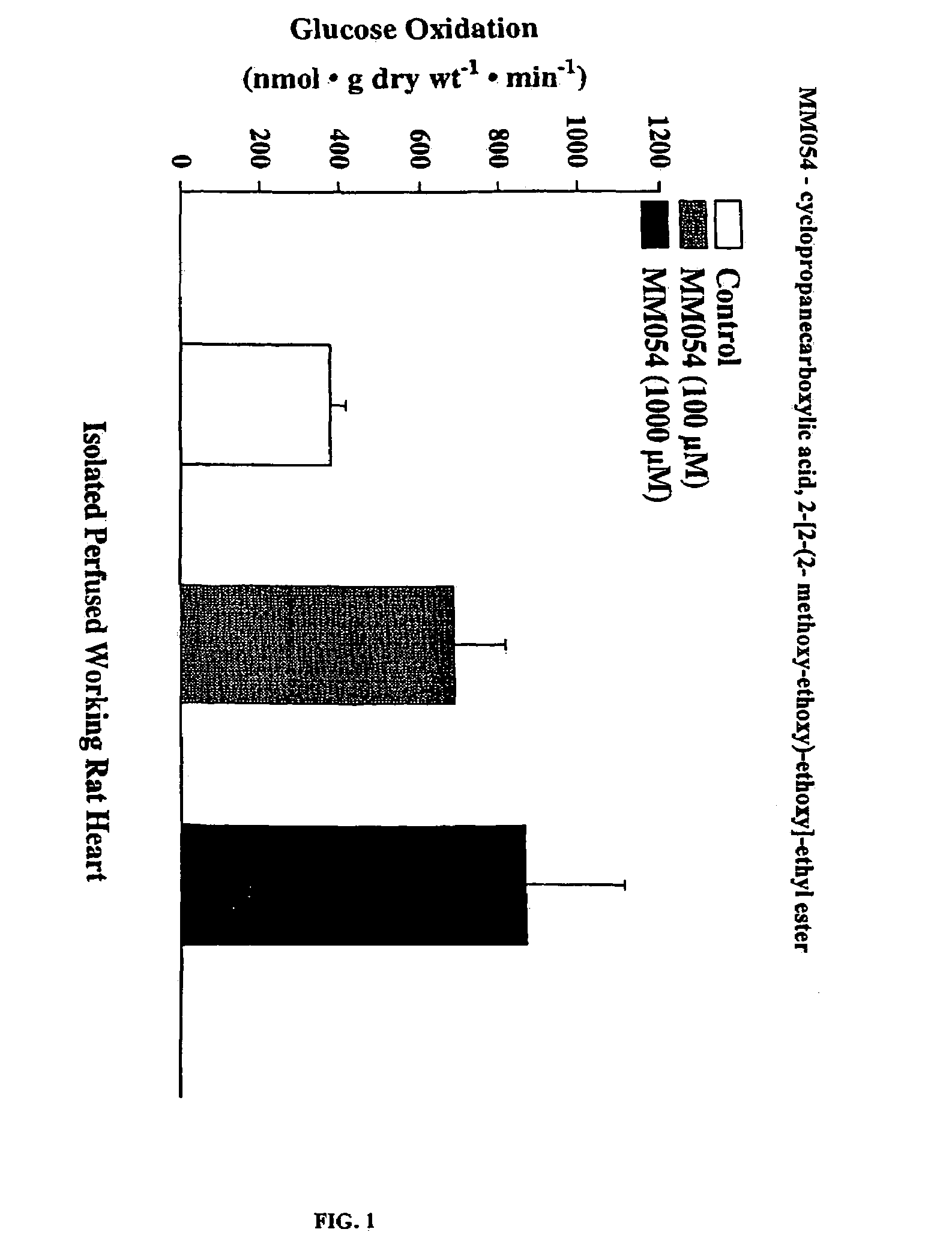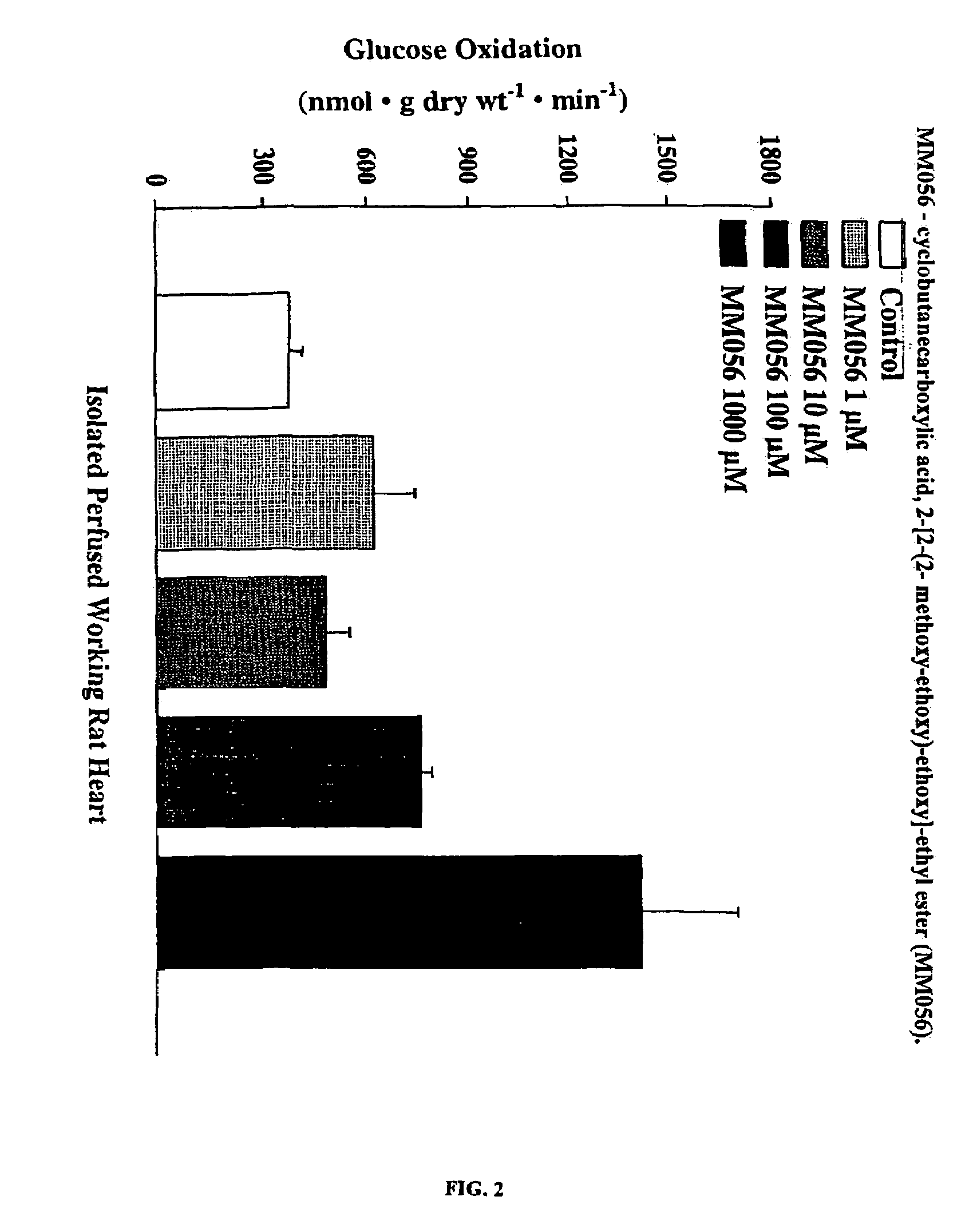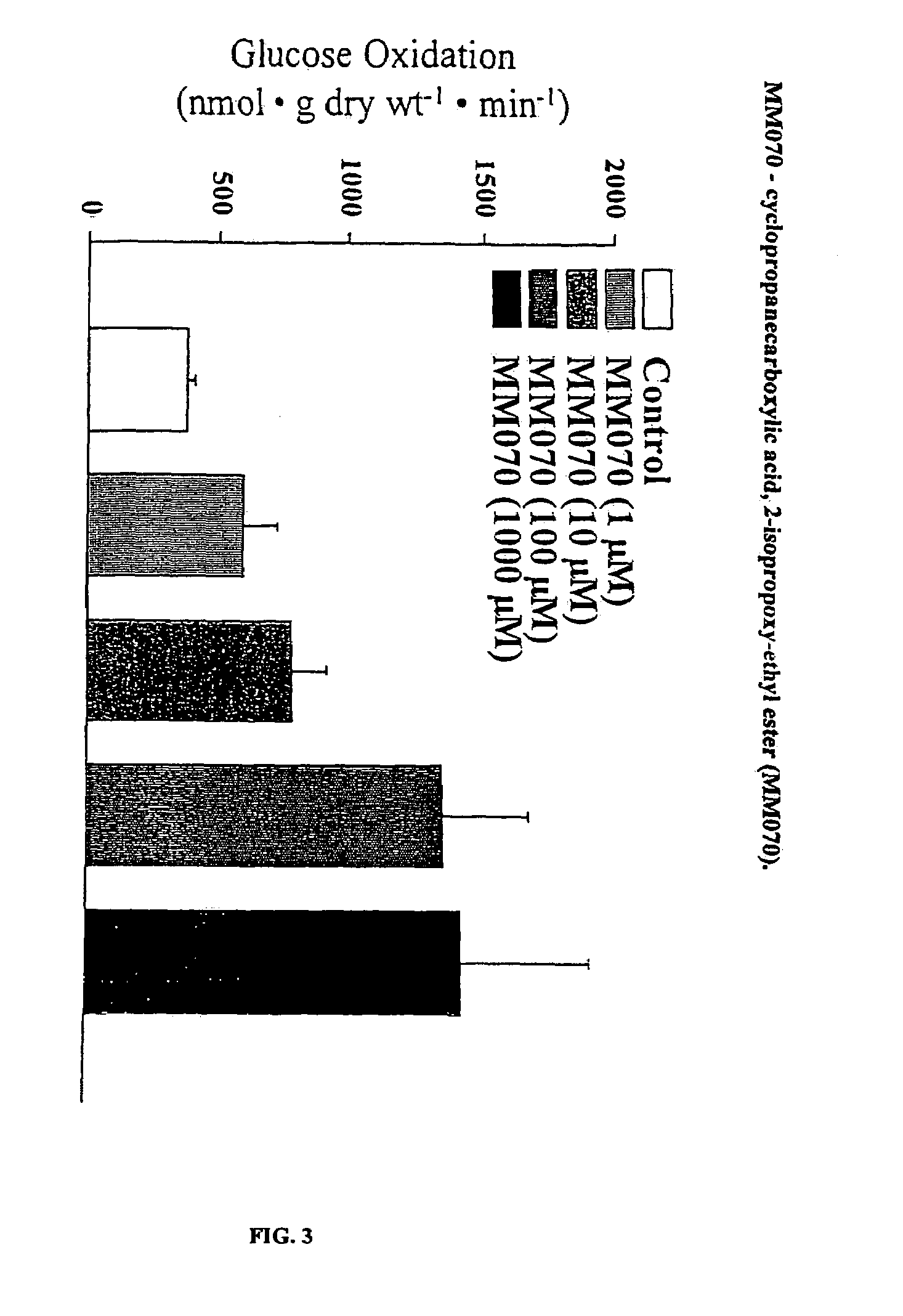Compounds that stimulate glucose utilization and methods of use
a glucose utilization and glucose technology, applied in the field of compounds that stimulate glucose utilization and methods of use, can solve the problems of mortality and morbidity, contribute to fatty acid-induced ischemic damage, and myocardial ischemia
- Summary
- Abstract
- Description
- Claims
- Application Information
AI Technical Summary
Benefits of technology
Problems solved by technology
Method used
Image
Examples
example 1
[0350]Preparation of Cyclopropanecarboxylic Acid, 2-[2-(2-methoxy-ethoxy)-ethoxy]-ethyl Ester
[0351]
[0352]Triethylene glycol monomethyl ether (1.1 eq, 5.26 mmol, 0.84 ml) and triethylamine (1.1 eq, 5.26 mmol, 0.73 ml) were taken in a 10 ml round bottom flask and dichloromethane (3 ml) was added. This mixture was cooled to 0° C. and then cyclopropanecarbonyl chloride (4.78 mmol, 0.5 g, 0.43 ml) was added in a dropwise fashion maintaining the temperature at 0° C. with constant stirring.
[0353]A yellowish-orange solid was observed after some time. Stirring was continued for 1 hour at 0° C. The reaction was monitored by thin layer chromatography, and then quenched with saturated ammonium chloride solution. The mixture was then transferred to a separatory funnel, washed with 5% sodium bicarbonate (2×5 ml), 1:1 hydrochloric acid (2×5 ml) and then with brine (5 ml). The dichloromethane layer was separated from the aqueous layer, dried over anhydrous sodium sulphate, filtered, and evaporated ...
example 2
Preparation of Cyclobutanoylglycine (Cyclobutanecarbonyl-amino)-acetic acid)
[0356]
[0357]Methyl ester glycine hydrochloride (1 eq, 2.39 mmol, 300 mg) and pyridine (2 eq, 4.78 mmol, 0.39 ml) were suspended in (5 ml) of dichloromethane followed by addition of DMAP (1.5 eq, 218.5 mg) in one portion; the reaction mixture was stirred for 30 minutes at room temperature. After 30 minutes, cyclobutanecarbonyl chloride (2 eq, 4.77 mmol, 0.54 ml) was added slowly and the reaction mixture was stirred for 4 hours at room temperature. The solvent was evaporated in vacuo and the residue extracted with ethyl acetate. The ethyl acetate layer was dried and concentrated to dryness. The crude material obtained was purified by flash chromatography to yield pure compound A (358 mg, 87%).
[0358]To a solution of A in (6 ml) THF, was added lithium hydroxide (1.1 eq, 2.3 mmol, 2.3 ml, 1M) at room temperature and the reaction mixture was stirred for 1.5 hours. The reaction mixture was then concentrated in vacu...
example 3
Preparation of Cyclobutanecarboxylic Acid, 2-[2-(2-methoxy-ethoxy)-ethoxy]-ethyl ester
[0361]
[0362]Triethylene glycol monomethyl ether (1.1 eq, 4.64 mmol, 0.74 ml) and triethylamine (1.1 eq, 4.64 mmol, 0.65 ml) were taken in a 25 ml round bottom flask and dichloromethane (3 ml) was added. This mixture was cooled to 0° C. and then cyclobutanecarbonyl chloride (4.22 mmol, 0.5 g, 0.48 ml) was added in a dropwise fashion maintaining the temperature at 0° C. with constant stirring (vigorous reaction).
[0363]A pink colored solution was observed after some time. An extra 4 ml of dichoromethane was added to maintain proper stirring (the reaction mixture became thick). Stirring was continued for 1 hour at 0° C. The reaction was monitored by thin layer chromatography and then quenched with saturated ammonium chloride solution. The mixture was then transferred to a separatory funnel, washed with 5% sodium bicarbonate (2×5 ml), 1:1 hydrochloric acid (2×5 ml) and then with brine (5 ml). The dichlo...
PUM
| Property | Measurement | Unit |
|---|---|---|
| temperature | aaaaa | aaaaa |
| hydrostatic pressure | aaaaa | aaaaa |
| pressure | aaaaa | aaaaa |
Abstract
Description
Claims
Application Information
 Login to View More
Login to View More - R&D
- Intellectual Property
- Life Sciences
- Materials
- Tech Scout
- Unparalleled Data Quality
- Higher Quality Content
- 60% Fewer Hallucinations
Browse by: Latest US Patents, China's latest patents, Technical Efficacy Thesaurus, Application Domain, Technology Topic, Popular Technical Reports.
© 2025 PatSnap. All rights reserved.Legal|Privacy policy|Modern Slavery Act Transparency Statement|Sitemap|About US| Contact US: help@patsnap.com



